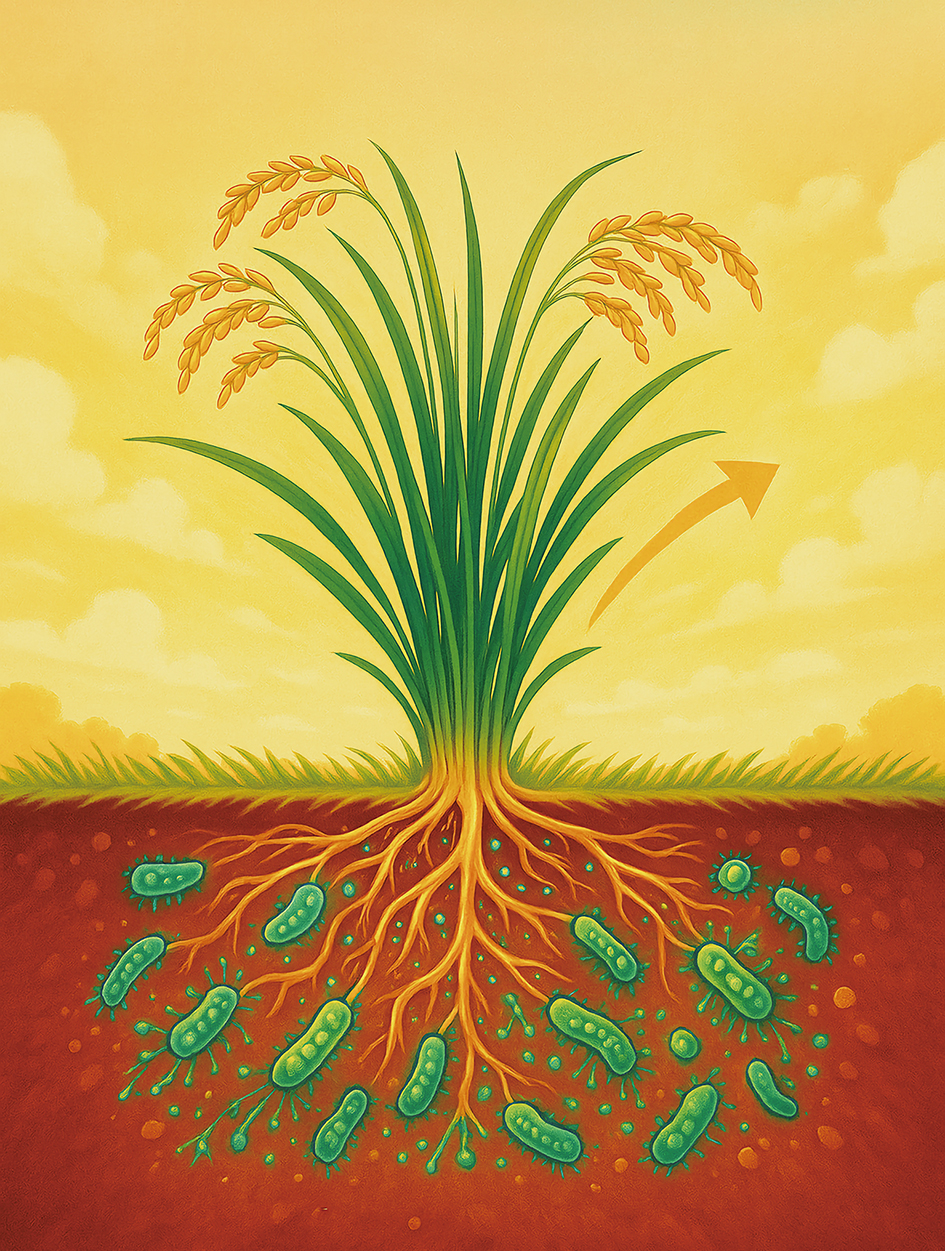Scientists have discovered that root-dwelling bacteria directly control rice tillering—a crucial yield trait—by producing a compound that mimics plant hormones. The study, published in Cell on June 12, 2025, reveals how microbes partner with crops to shape agricultural productivity. Researchers analyzed the root microbiota of 182 genetically diverse rice varieties under field conditions. They identified specific bacterial genera whose abundance correlated with tiller numbers, including Exiguobacterium (tiller-inhibiting) and Roseateles/Piscinibacter (tiller-promoting). Lab and field inoculations confirmed these bacteria causally regulate tiller development.
They found, a tiller-inhibiting strain produces a dipeptide called cyclo(Leu-Pro), which mimics strigolactones (SLs)—key plant hormones suppressing tillering. This dipeptide binds directly to the rice SL receptor OsD14, activates the SL signaling pathway. As a result, it reduces tiller numbers by over 50% in multiple rice varieties. Notably, mutant rice lacking OsD14 remained unaffected, confirming this receptor is essential for the bacterial compound’s function. Cryo-EM structural analysis revealed cyclo(Leu-Pro) occupies the same OsD14 binding pocket as natural SLs.
This work uncovers a microbe-hormone signaling axis vital for crop architecture. Harnessing such bacteria could offer new strategies to optimize tillering—and thus grain yield—in sustainable agriculture, reducing reliance on chemical treatments.

The root-dwelling bacteria directly control rice tillering by producing a compound that mimics plant hormones. (Graphic: AI generated)

